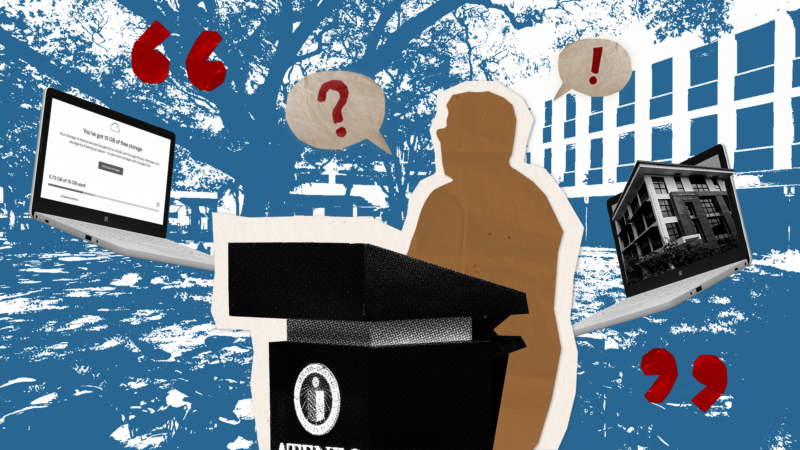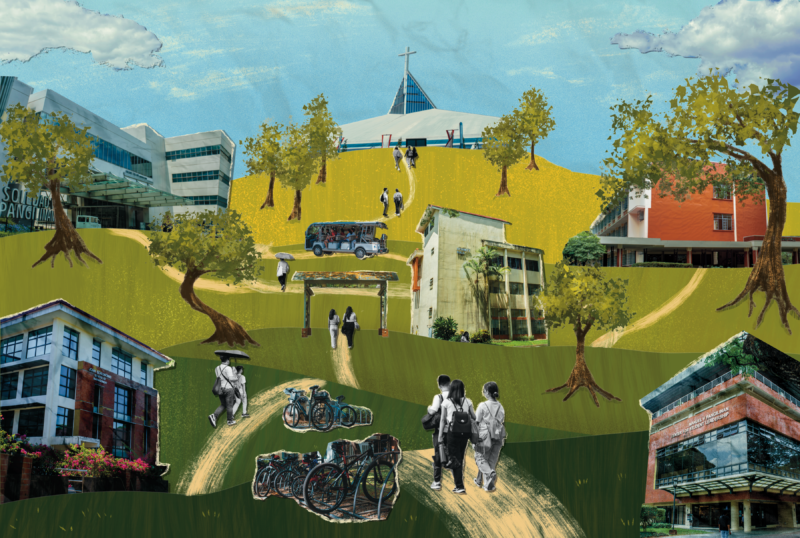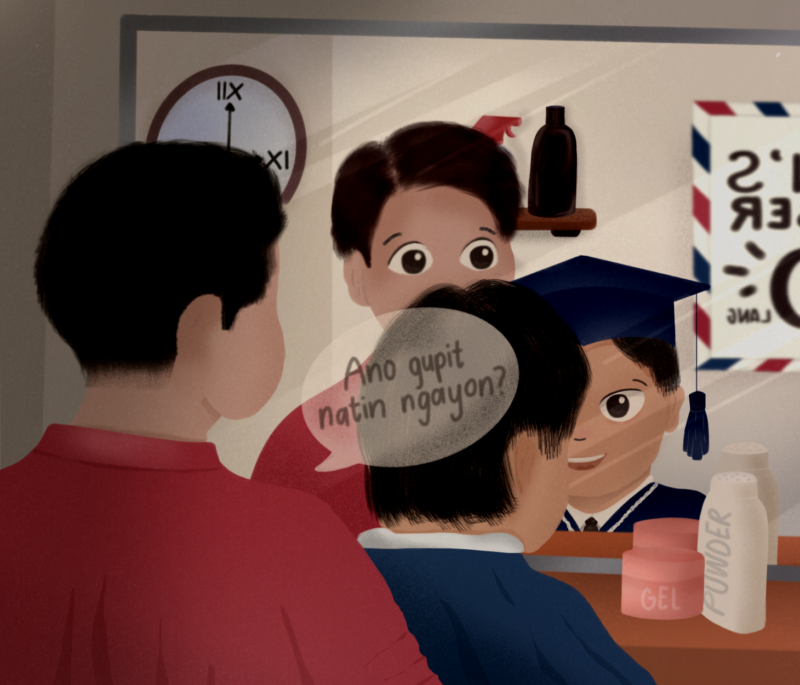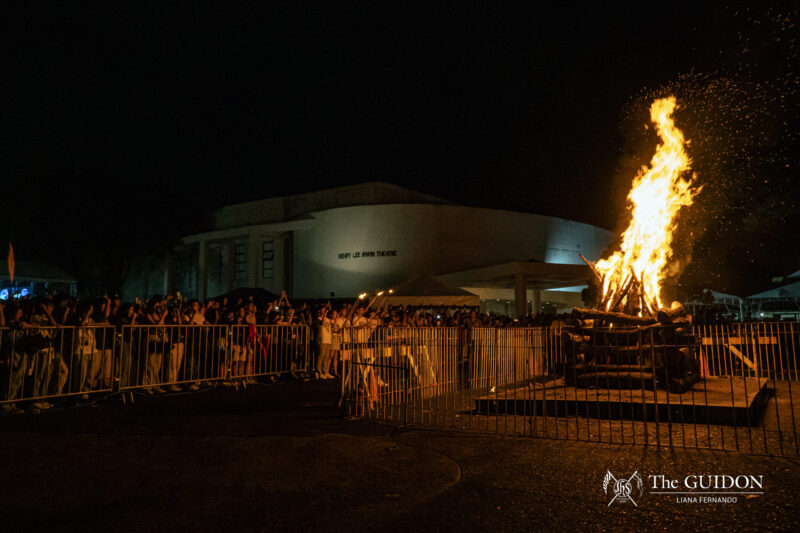THE ATENEAN’S most common form of transportation is banned in Katipunan Avenue.
Tricycles from the Loyola Pansol (LP) and Loyola Heights (LH) Tricycle Operators and Drivers Association (TODA) can now pass only through Esteban Abada Street, which is parallel to Katipunan Avenue.
Tricycle terminals were allowed near Gates 2.5 and 3.5 to provide tricycle services in campus.
The Metro Manila Development Authority (MMDA) started informing tricycle drivers about the ban on the morning of August 14, a day before the ban was effective.
The ban was based from Metro Manila Council Ordinance No. 6, which states that tricycles are not allowed in national highways and major thoroughfares.
The ordinance says tricycles are allowed in tertiary roads and subdivisions.
Katipunan Avenue is part of C5, a national road, said University Physical Plant (UPP) Administrator Leoncio Miralao.
In an earlier interview before the ban, LP TODA President Alex Baay said the tricycle drivers negotiated with Quezon City Hall officials on August 14, and were issued a moratorium, which allowed space for dialogue between the tricycle drivers and officials.
Miralao said, however, that national roads are under the jurisdiction of the MMDA, and not Quezon City Hall.
Not the first time
News about the tricycle ban circulated through e-mail the night before the ban.
This is not the first time a tricycle ban was imposed in Katipunan Avenue. A similar ban was imposed in 2005.
“Mga dalawang beses na ‘atang nagtangka na talagang tanggalin ang tricycle sa Katipunan (I think it was twice attempted to remove tricycles in Katipunan),” said Filipino Assistant Professor Gary Devilles.
Devilles also said that students and tricycle drivers were clearly not consulted before the ban. “Sa akin hindi makatarungan ‘yon (For me, it’s not fair),” he said.
Lara Ysabel Agay (II AB Comm) said the tricycle ban was “okay.” She added, however, that information about it should have been disseminated earlier.
Benedick Borbe (III BS Bio-A) said the MMDA should have studied the consequences of the tricycle ban before implementing it.
“I think the MMDA just implements the established law without thinking or considering the consequences it may bring,” he said. “They should have studied the case first!”
For Ysabel Agnes Legaspi (I BS MIS), banning the trikes from Katipunan Avenue also raises security concerns. “Mas safe mag-trike kaysa maglakad ka…baka may mang-hold up sa ‘yo (It’s safer to ride a tricycle than to walk…someone might hold you up),” she said.
Poverty, safety
Tricycle driver Richard Punto said his daily income was cut because of the ban. “Ako rin nag-aaral ako, tapos nakadepende ako sa pamamasada (I also study, and I rely on what I earn from the tricycles),” he said.
He added that before, he used to earn P300 by 1:00 pm. “Ngayon, hapon na P100 pa lang (Now, by the afternoon, I only earn P100).”
“Ang hirap na ng buhay tapos bigla na lang ganyan. Ang hina na ng biyahe (Life is hard now, then they suddenly do that. The number of trips became weak),” said Jun Cao, another tricycle driver.
Filipino Assistant Professor Michael Coroza also said that the ban cuts the tricycle drivers’ income. He added, however, that these tricycles are unsafe, especially in a national road such as Katipunan Avenue.
Marcus Romeo Javier (II BS Psy) said that no one benefits from the ban. “You cut the livelihood of hundreds of people…you need a cheap source of transpo,” he said.
As of press time, members of the LP and LH TODA will be meeting with officials from Quezon City Hall to negotiate about the ban.
Traffic gridlock
Before the ban, sudden changes on Katipunan Avenue’s traffic scheme and inconsistent tricycle fare rates plagued most commuters during the first two weeks of August.
Last August 5, the MMDA relocated the U-turn slots opposite National Bookstore and Miriam College, causing massive traffic along Katipunan Avenue. Both U-turn slots are now blocked.
Commuters will have to take the U-turn slot under the Katipunan flyover, or near the University of the Philippines.
Miralao said that the relocation of the new U-turn slots was MMDA’s way of improving traffic in Katipunan Avenue.
A UPP traffic report said these U-turn slots were implemented “without notice.”
The new U-turns also distorted the newly-increased tricycle fare rates, according to UPP situation reports. The new U-turns intensified issues on tricycle drivers overcharging commuters.
As of press time, the MMDA also plans to extend the concrete barrier separating the Katipunan flyover from the service road. If this will push through, vehicles may enter the Ateneo only through Gate 3. Gate 2 .5 will be used as an exit.
With reports from Kyra C. Ballesteros, Rachelle D. Gutierrez, Dessa M. Jimenez, and Sasha D.P. Lim Uy






